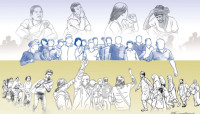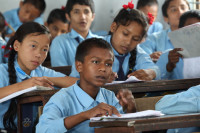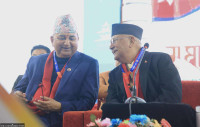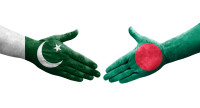Opinion
Unbent and unbowed
Relief workers must be mindful of the fact that people have lost homes, not their skills and dignity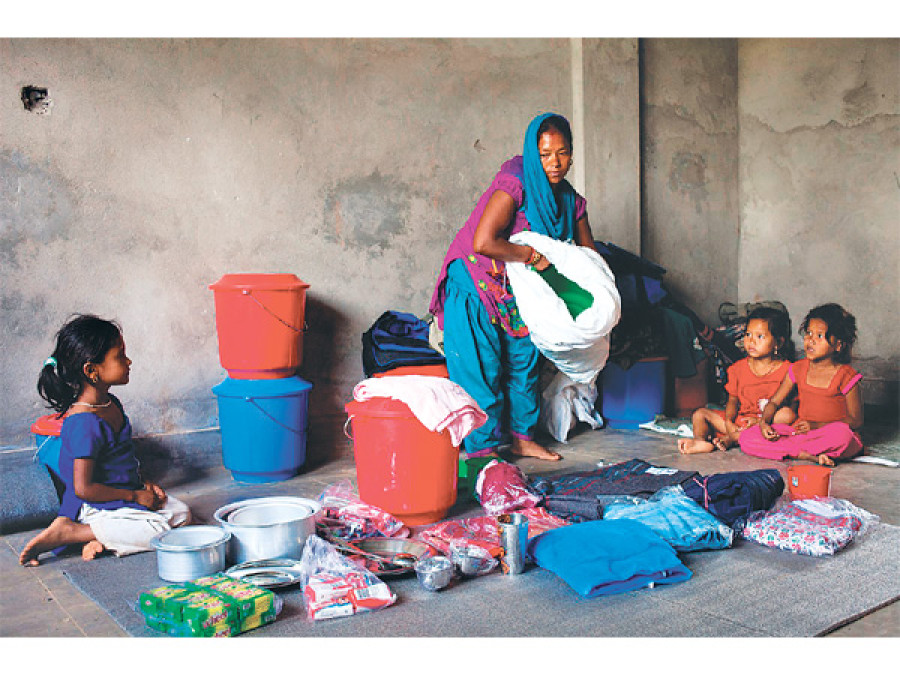
Samrat Katwal
In Bharta VDC of Makwanpur district, a 54-year-old mother whose year-and-a-half-old daughter had died during the earthquake offered us the food she had collected from the debris of house, as we shared the open sky in her front yard as shelter. A lady in Ramkot shed tears when she queued up for relief food being handed-over by outsiders. Her home was completely destroyed by the 7.9 magnitude earthquake, but it was not loss of her house that distressed her, it was her dignity and self-respect which had been shaken as she stood in line for a handout. Today, Nepalis, who would otherwise offer food and shelter to any visitor in need, are themselves lining up for food and tarpaulin.
Similarly, many locals in far-off villages who have seen their homes, heritage, and the whole of their village collapse now hold the opinion that their architecture was weak and inferior. The dwellers of Kathmandu’s suburbs, where most old homes collapsed even as concrete buildings still stand, might feel the same way. A very serious aftershock of this earthquake is that it could crumble our trust in our resources, our institutions, our architects, and in ourselves.
Rebuilding homes
At this point, many relief workers/organisations have started searching for and experimenting with new home designs for Nepali communities.
Some are even trying to find a completely new alternative to our traditional homes while others are experimenting with new temporary-house prototypes. Urban dwellers might not have the skills to construct a temporary shelter out of the resources available locally, or tarps available at hand, but we need to understand that temporary shelters have been a way of life in the villages as they go herding, logging, or farming away from their primary homes regularly.
Our prototypes for temporary shelter will only confuse them—they have lost their homes, not their skills! Communities need to be relieved of the mindset that their ancestral designs were completely useless and what is being offered by relief workers is the ultimate design. Maybe, our structures were weak and need improvement to withstand even higher magnitude quakes. But, it is also true that our homes had stayed up for decades, many of them even withstanding the 8.4 Richter scale earthquake in 1934. If they collapsed now, it was primarily because they were decades old and had met their expiry date.
In addition, one cannot think of homes only on the basis of their ability to withstand earthquakes. House designs are different for different geo-cultural regions and they work to serve specific social and environmental needs. No outsider can understand the kind of homes that are needed as much as the locals themselves. The increasing belief among locals that their homes were weak needs to be cleared and relief workers need to partner with affected community members in designing homes, including temporary ones, or at least believe in their capacity to rebuild their own homes.
No time to experiment
Further, in addition to houses, other things that come as relief packages, including junk food, a certain brand of toothpaste and soap or sanitary napkins, will all standardise the pattern of consumption. It will leave a mental benchmark on what to use and what is a superior product, even after the relief work is over. I still remember the confused face of a lady for whom brushing her teeth was not that important but her relief pack had a toothbrush and paste inside. It is very important that only things that are very essential be provided, and where possible, only local stuff that they were already consuming be taken as relief material. This phase of relief is not the right time to acquaint locals with new dental hygiene practices and menstrual products. Decisions about local needs, distribution mechanisms, and handing over of relief packages should be done by locals themselves. The women we met would probably want someone to come into her demolished home as a son or a daughter, not as relief distributers. They would probably appreciate a hand to clear the debris that still remains.
Though help in many forms is essential, it is equally important to realise that Nepali communities rose on their own after the 1934earthquake and even today, are capable of doing so. As we have all geared up as ‘relief workers’, our best-intended actions can lead to unintended consequences that might weaken the morale of the earthquake survivors and pave the way towards dependent communities. The self-respect of the affected people and communities needs to be renovated through meaningful community participation during relief works. The affected communities need to be actively involved in decision-making and the implementation of relief activities. No one knows about the immediate needs of the communities as much as the affected and relief collectors should not assume that community members share the same needs as them.
Humility matters
Furthermore, relief workers and organisations will have to be humble enough to not care about their banners, promotional t-shirts, and ‘relief trophies’ to be uploaded to Facebook. Restoring dignity will come only with very cautious relief packages and mechanisms. Personal acts in the form of language, action, and outfit of relief actors also matters.
The earthquake has already caused great damage. Now, our well-intended relief actions should not lead to another disaster and destroy the dignity of our long self-sufficient communities. Only if we go to affected areas as sons and daughters, as brothers and sisters, and as friends more than as people with a relief package, will we finish with the relief phase soon and help people regain control over lives and livelihoods in a dignified manner.
Katwal is associated with the Hands-On Institute




 10.12°C Kathmandu
10.12°C Kathmandu

